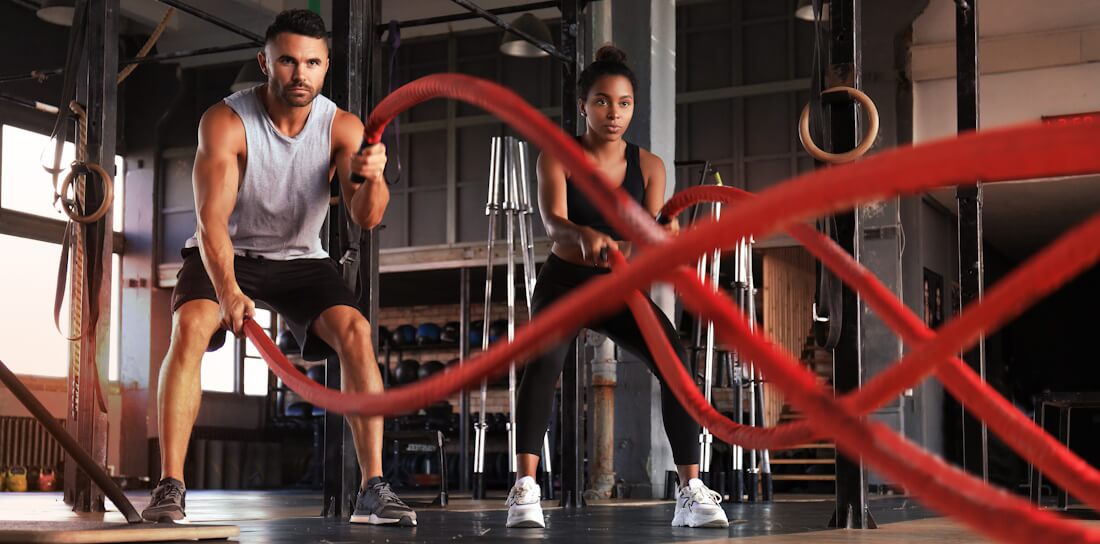Resistance training is important at any age, but it becomes especially crucial as we get older. We all want to look younger, healthier, and stronger as we age. While we typically stop growing in height by 18 years old, our bone density and muscle mass continue to mature until around 25.
During these wonderful years we experience youth and energy levels beyond imagination. You can eat whatever you want and get away with it. This is due to our body’s metabolism working at its peak. But what happens after 25?
The gradual decline after our peak
We slowly have less energy as we age, a little more body fat, we’re more tired along with being stiffer, and we experience pain that we never had before. We all wonder what happened. I used to do the same thing every day, but what has changed?
As we age, our body starts losing muscle mass every year, and with that we lose our metabolism and high energy levels. We experience an increase in body fat, less mobility, reduced flexibility, and an increased stress level. This only increases as we age more and faster.
The consequences of muscle loss with age
By the time we hit 50, we’ve lost more than half our muscle mass, more than 70% strength, and 80% of our speed and agility. Only 10% of people over the age of 30 do sprints, and that only decreases with age.
Some people over 50 have a poor diet and a lack of physical activity, so they may be on different medications (chemicals) to treat the symptoms which are caused by their lifestyle.
The search for the fountain of youth
We are always looking for the magic pill that brings our youth back. Think of aging like a river that has a high flow, and over time as the water flow decreases, there is less oxygen, pollution, erosion, algae blooms, weeds, bacteria and fungi all start to grow. This is all due to poor water flow, just like our body with lack of movement and poor nutrition.
The same thing happens to our body when we are not active and more sedentary with poor blood flow. In the human body this relates to higher blood pressure, Type II diabetes, weight gain, less energy, feeling and looking older.
These are all due to being less active, less muscle mass, poor diet, and a lifestyle that includes alcohol, smoking, and poor sleep.
Increased nutritional needs as we age
As we age our body requires more protein, fat, and essential nutrition. The body becomes less efficient in absorbing food as we get older. This is why you need more nutrients as you get older because your body absorbs less.
The dangers of muscle loss in the elderly
Research has shown that 30% of people over the age of 65 who have an accident and break a hip or leg, will not make it out of the first year due to sarcopenia, which is a loss of muscle mass, along with decrease in bone density. Also, there are metabolic changes that occur with muscle and aging.
Our cells contain mitochondria, which are like tiny power plants that produce energy for the cell. Mitochondria have their own DNA separate from the DNA in the cell’s nucleus.
Sometimes, parts of the mitochondrial DNA can be lost (deleted) or develop errors (mutations). These deletions and mutations are often caused by oxidative damage, which is like “rusting” of the DNA.
Damage to the mitochondrial DNA can lead to a decrease in the muscle cell’s ability to produce energy effectively, which can impact muscle function and performance.
The negative health effects of reduced muscle mass
With less muscle mass we have less metabolism, which can lead to more body fat and unnecessary weight gain.
In men an increase in estrogen, decrease in testosterone, and becoming insulin resistant can directly lead to higher blood pressure, Type II diabetes, heat disease, depression, sleep apnea, and lack of mobility.
Women have problems with less bone density, which can cause pre-mature hip replacement, and a lower serum of free testosterone levels which is directly related to lower muscle mass.
The many benefits of resistance training for older adults
Other benefits from resistance training can prevent elderly from injuries and catastrophic events such as falling with serious injuries.
Other benefits from strength training are improving muscle quality, physical performance, muscle fiber, bone density, metabolic health and insulin sensitivity, better management of chronic health conditions, better quality of life, psychological well-being, independent living, and the reduction in falls and fractures. Becoming more insulin sensitive can prevent intramuscular lipid accumulation, and enhance amino acid uptake and protein synthesis.
Taking charge of your health through resistance training and lifestyle changes
Resistant training, nutrition, and simple lifestyle changes can make all the difference and add more quality years to your life. Think of resistant training and nutrition as your 401k for retirement.
Your health doesn’t come out of a bottle. We all need to be responsible for our health, and not rely solely on our physicians.
What is the one thing we all look forward to when we retire? To be able to travel, and go to places we all dreamed about, not sitting in a doctor’s office every week for more medications that dtreat the symptoms, but don’t fix anything.
There are more than 250,000 medications. Only one works. That is antibiotics, which actually destroy your gut bacteria. Treating your symptoms with chemicals is not the way to be healthy. Take charge of your life and your health.


